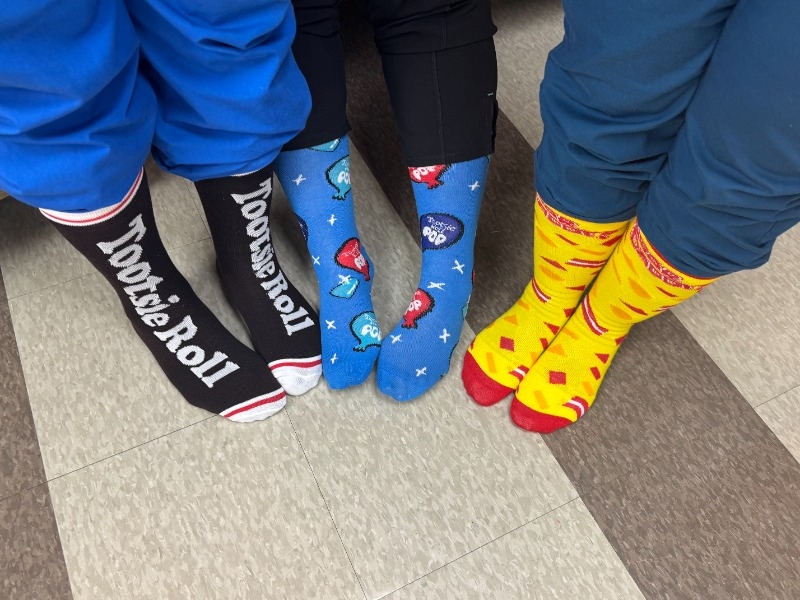"Every Sole Deserves a Sock"
September is recognized nationally as Peripheral Artery Disease (PAD) Awareness Month, and Girard Medical Center’s Wound Care Department is taking steps to raise awareness while giving back to the community.
To highlight the importance of foot care for those living with PAD, GMC has launched the “Every Sole Deserves a Sock” campaign, a community sock drive that will run now through the end of October.
“PAD can lead to poor circulation in the legs and feet, which increases the risk of wounds that are slow to heal,” explained Jennifer Gordon, RN. “Something as simple as clean, dry socks can help protect against complications and promote healthier feet.”
Community members are encouraged to donate new socks at the following drop-off locations:
- Any GMC Clinic
- GMC Registration Office
- Wound Care Clinic Nursing Desk
All donations will be distributed locally to support those in need within the Girard community and surrounding areas.
“Our goal is to spread awareness about PAD while also making a direct, positive impact for people in our community,” said Jennifer. “Every donation, no matter how small, can help keep someone warm, comfortable, and safe.”
Girard Medical Center invites the public to participate in this meaningful campaign and help spread the word. Together, we can raise awareness of PAD and make a difference—one pair of socks at a time.
For more information about the “Every Sole Deserves a Sock” campaign or Wound Care services at GMC, please contact Girard Medical Center at (620) 724-5109 or visit www.girardmedicalcenter.com.
Peripheral Arterial Disease (PAD) and Non-Healing Wounds
Affecting more than 8 million Americans ages 40 and older1, Peripheral Arterial Disease (PAD) occurs when arteries in the legs become narrowed or blocked by plaque buildup, reducing blood flow to the limbs. It is a common, yet serious disease that can occur in any artery; however, it most commonly affects the blood flow in your legs.
About 1 in 4 people with PAD experience common symptoms, which may include some or all of the following:1
- Pain, fatigue, heaviness, tiredness or cramping in the leg muscles that occurs during activity and is relieved by resting
- Leg numbness or weakness
- Color changes in the skin of the feet, including paleness or blueness
- Coldness in one leg compared to the other (skin cool to the touch)
Peripheral arterial disease can lead to various complications, including non-healing wounds. This is because when blood flow is limited, patients may experience severe pain in the feet or toes, even while resting, and are at a greater risk for developing wounds. In addition, without healthy circulation, the oxygen and nutrients critical to successful healing are unable to reach those wounds.
Wound Care and PAD
If a wound occurs, a wound center can provide the necessary treatment to promote healing. One of the first steps a wound center may take to treat a PAD-related wound is restoring blood flow to the affected area. This, along with a lower extremity assessment and foot evaluation, is a key component of the personalized plan of care the wound care providers develop for each patient.
Without proper wound care treatment for wounds as a result of PAD complications, the tissue in the skin may continue to die, or infection may continue to spread; amputation may be the only option to stop the spread of tissue damage and disease. This is why, for those with PAD, wound care is essential.
To facilitate wound healing, the clinicians at the Girard Medical Center Wound Care Clinic are trained in both traditional and advanced therapies. For more information about PAD and wound healing, call 620.670.4240.
REFERENCES
- https://www.nhlbi.nih.gov/health/peripheral-artery-disease


